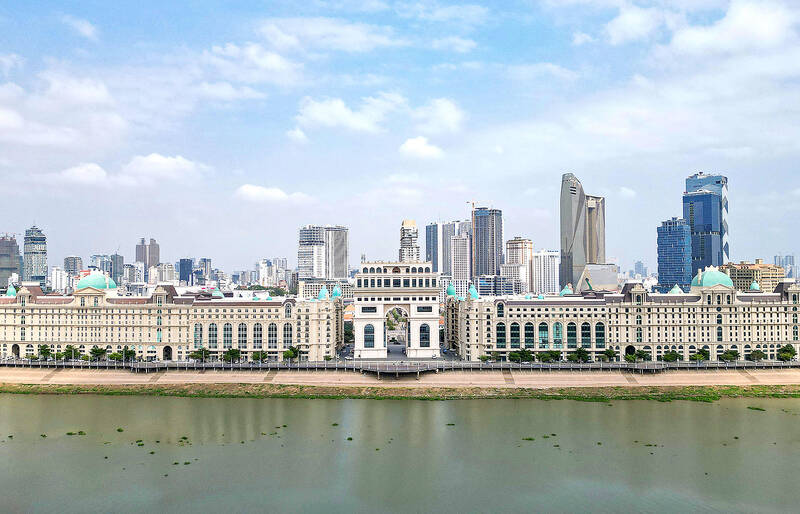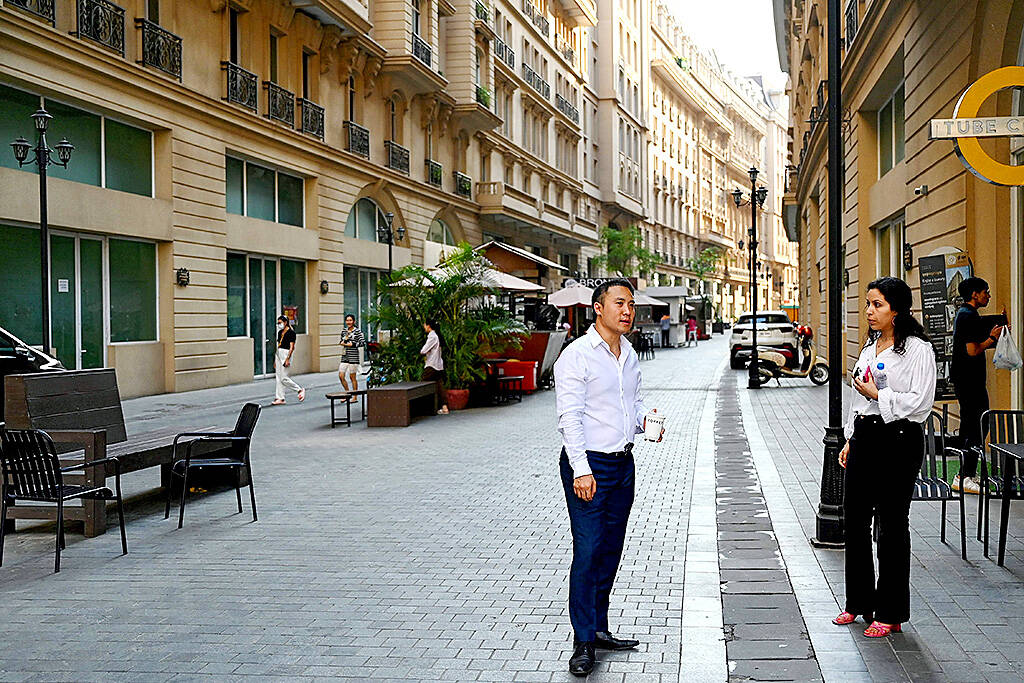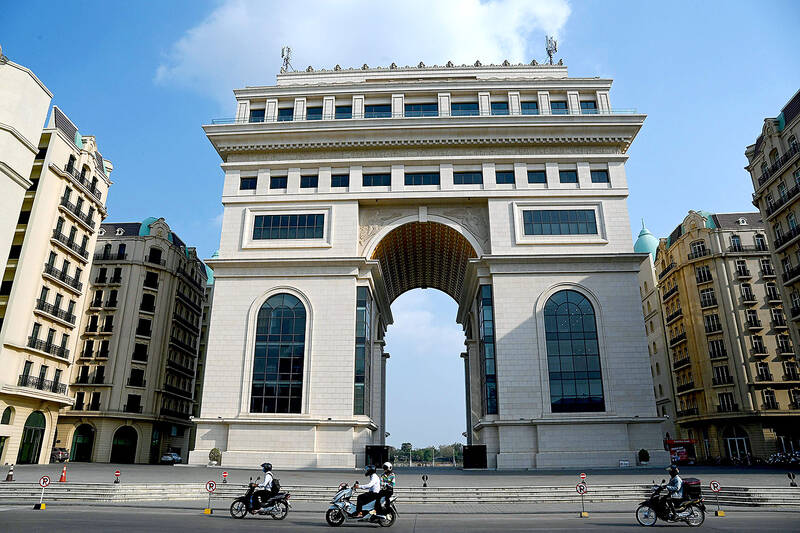In downtown Phnom Penh, a huge high-end development mimicking the buildings and boulevards of Paris embodies a move to cash in on the “new frontier” for luxury — in the capital of one of Asia’s poorest countries.
A replica of the Arc de Triomphe towers over a branch of the Mekong River, flanked by shops and apartments built in the style of the French capital’s signature Haussmann blocs.
“This building is beautiful, really beautiful,” enthused Heng Sokharith, 49, who bought a unit in the Elysee project — named after the Champs-Elysees avenue in Paris — for his furniture business.

Photo: AFP
“When we have such a building in Cambodia, it is a source of pride.”
With its manicured promenades, its cafes and its self-declared elegance, this “mini-Paris” is being sold as a chic enclave for the rich, sheltered from the restless bustle and noise of the city of two million.
Developers OCIC have transformed what was a swamp on an island, throwing up skyscrapers, an international school and a hospital. OCIC, part of one of the country’s largest conglomerates, invested US$400 million in Elysee, which was initially launched in 2015 and is now nearing completion.

Photo: AFP
Koh Pich, the island that houses the Elysee, has become a symbol of Phnom Penh’s rebirth after decades of conflict which ended in the early 1990s.
Cambodia has had one of the fastest-growing economies in Asia over the past 20 years. But the country is riven with graft and cronyism, with much of the wealth concentrated in the hands of a small elite with close links to longtime ruler Hun Sen and his son Hun Manet, who took over power last year. Prices for the large Elysee units run up to US$1,300 a square meter — in a country where the GDP per capita is just over US$1,600 and the minimum wage in the garment sector, a major employer, is around US$200 a month.
But despite these unpromising conditions, more than 80 percent of the 229 units have been sold, according to OCIC Vice-President Thierry Tea, although not all are currently occupied. Phnom Penh is trying to attract foreign investors looking for property with its prices, which are competitive compared to other cities in the region.

Photo: AFP
“Should the customer want to buy, to rent, to have a yield and return on investment, they are very welcome,” Tea said.
“Cambodia has so much to offer. Phnom Penh is a growing city. There is a lot of potential.”
Under Hun Sen, Cambodia developed ever-tighter ties with Beijing, and Chinese money has flooded into the country, fueling a construction boom in the capital — but also bringing a mushrooming of casinos and other more unsavory businesses.
‘NEW FRONTIER’
Those backing the Elysee and similar high-end ventures say that in addition to Chinese money, they hope high-end brands will be attracted by the market potential offered by the country’s growing middle classes.
Not far from Koh Pich, a shopping mall with up to 75 luxury boutiques will open in the next few months. Pierre Balsan, the Cambodia managing director for Bluebell, the company behind the mall, said the country was “a new frontier for luxury brands.”
The main challenge was “to try to change the perception of the brand managers about Cambodia, and the image of Cambodia”, he said.
Balsan said last year’s handover of power to a new, younger generation — Hun Manet is 46 — had helped to sell the country.
Hun Manet, who studied in the US and Britain, embodies the renewal of the elite after his father ran the country with an iron fist for nearly 40 years.
He has pledged to turn Cambodia into a “high-income country” by 2050, but he presides over a corrupt system inherited from his father, which crushed all political dissent and worked to enrich cliques close to the government.
Gabriel Fauveaud, an expert on Phnom Penh’s urban development at the geography department of the University of Montreal, said the city was seeing the “capture of real estate income by big players who are making big money” because of their political connections.
Several Cambodians working in the luxury goods sector refused to be interviewed, citing a need for discretion.
But Heng Sokharith is happy with his investment.
“I think there will be more development in the future, so in the future this area will become more attractive,” he said.